Disease-Resistant Chestnuts You Can Grow in Your Backyard!
Bring back the timeless American tradition of growing chestnuts by planting your very own Chinese Chestnut Tree:
Disease resistant: Though blight may be a problem with American chestnuts, the Chinese Chestnut Tree is resistant and strong.
Easy to grow: Chestnuts do very well growing on their own, so there’s no need to worry about maintenance.
Delicious, healthy nuts: Low-fat chestnuts are great raw, roasted, baked or as an ingredient in your favorite dish.
Imagine being gathered around your family during the holidays, roasting chestnuts over an open fire - chestnuts that are homegrown. Though they’re great in a Thanksgiving stuffing, chestnuts make an excellent and healthy addition to meals and snacks year-round. And because Chinese chestnuts are easy to store, you’ll be able to enjoy your abundant harvest season to season.
Even better? The Chinese Chestnut Tree is eye-catching and stands on its own. Fragrant, creamy white and yellow-hued blooms cover the tree for a brief time in late spring. Subtle but radiant fall leaves follow in autumn to accompany the sweet chestnuts. And in the summertime, you’ll love the dense shade of the 40-60-foot wide canopy that creates a stunning, sun-dappled retreat right at home.
There’s so much to love about the Chinese Chestnut Tree. Since it produces chestnuts in approximately three years, you’ll be enjoying all those benefits and more in no time. Chinese Chestnut Trees are growing in popularity, and though you'll need two trees to grow a bountiful harvest, they're a must-have for the homegrower. Order your pair of Chinese Chestnut Trees today!
Planting & Care
Plant your Chinese Chestnut tree in a spot that receives full sun and has well-draining soil. Chinese Chestnuts are adaptable to most soil types, but do not like heavily clay soils or frosted/wet ground. Mulch around the base, but not near the trunk, to retain moisture and prevent weed growth. Water deeply to settle roots after planting.
Watering: If you experience a drought during the first few years after planting your Chinese Chestnut, water once a week. Otherwise, rainwater should be sufficient for the growing and established tree.
Fertilizing and Pollinating: There’s no need to add fertilizer. However, to produce a harvest, you will need to plant near another Chinese Chestnut.
Pest and Disease Control: Chinese Chestnuts are resistant to most diseases and pests that plague other chestnut trees.
Harvesting: Chestnuts will naturally fall off the tree when they are ready to be harvested. You can also lightly shake the branches to help them fall once the nutshells have turned brown. The best method for harvesting is to collect the fallen burrs, which contain the nuts, once every few days over the course of the several weeks of harvest. Use gloves or tongs as the burrs are spiky and can harm you if touched with your bare hands.
Storing: Chestnuts can be stored in their shell in the fridge for several months. If you’d like to store them for longer, first dry them out for several days, and then store in a dark, dry space. Simply boil them to rehydrate and soften the shell.
Usage: Chestnuts are delicious fresh and raw. Roasting them over a fire or baking them creates a delightful aromatic experience. They are also a wonderful addition to many dishes, adding a hint of sweetness without being overwhelming.

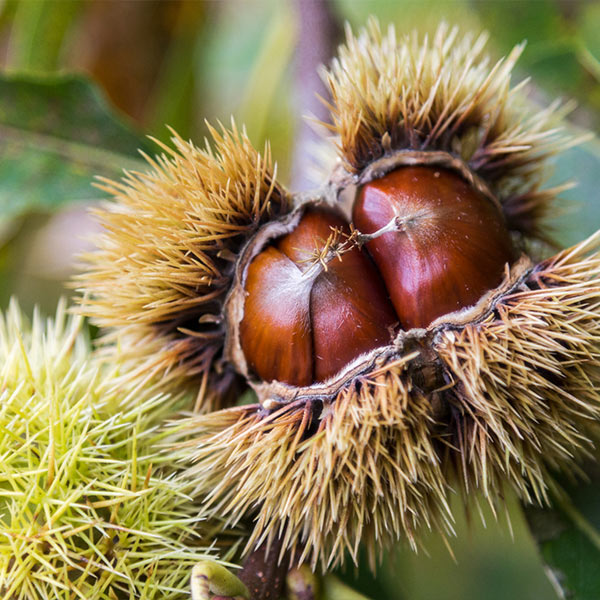
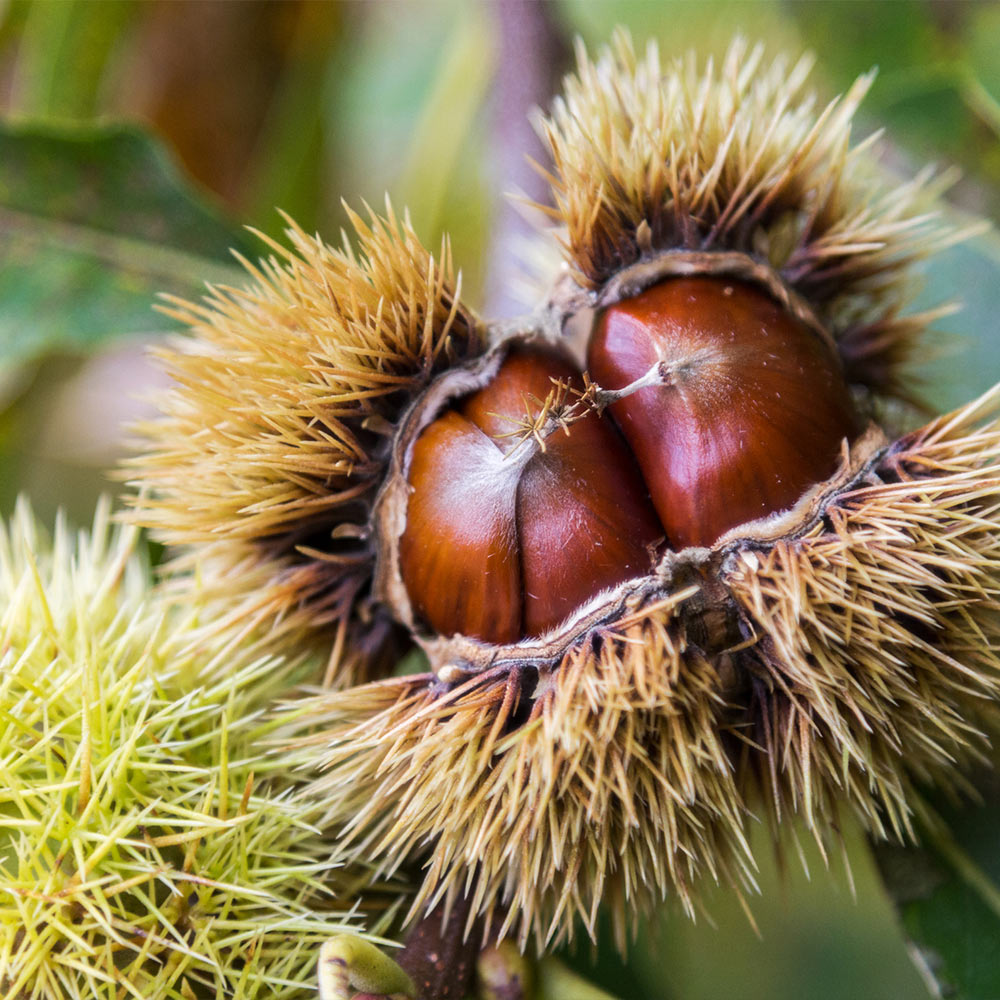
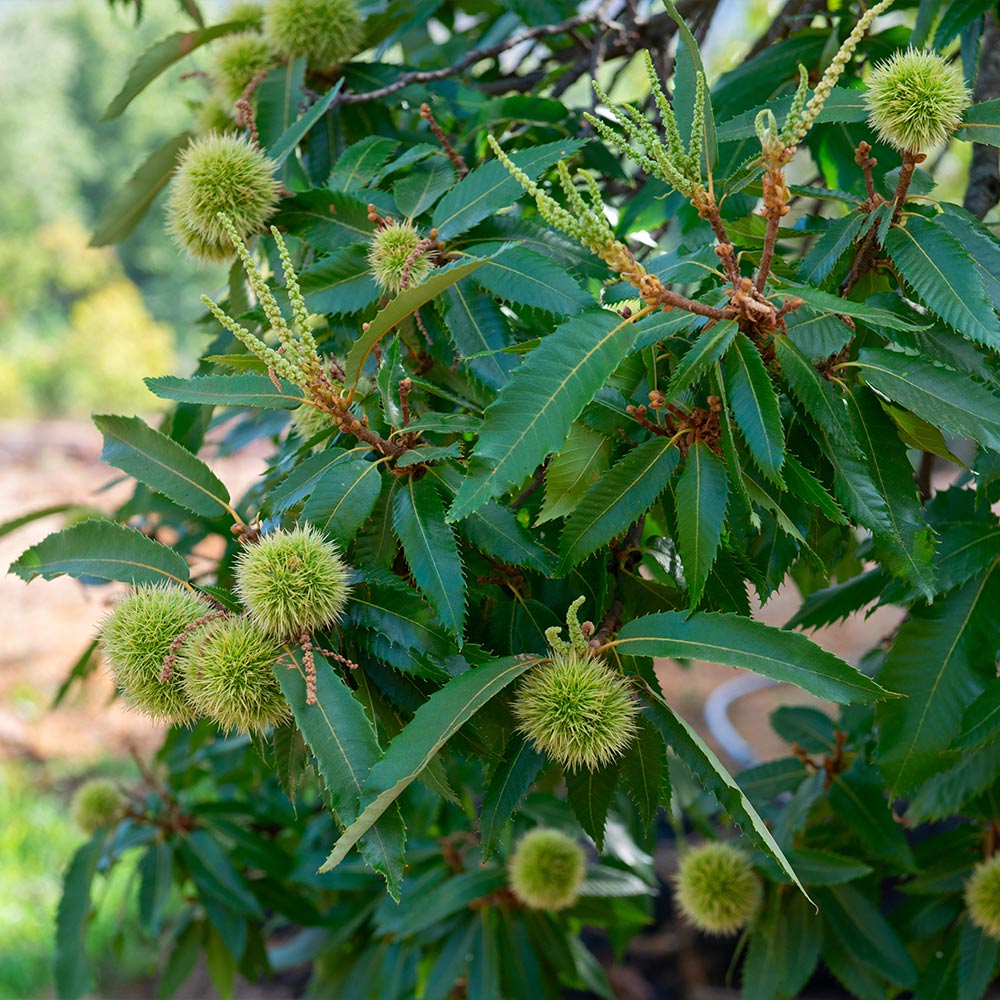
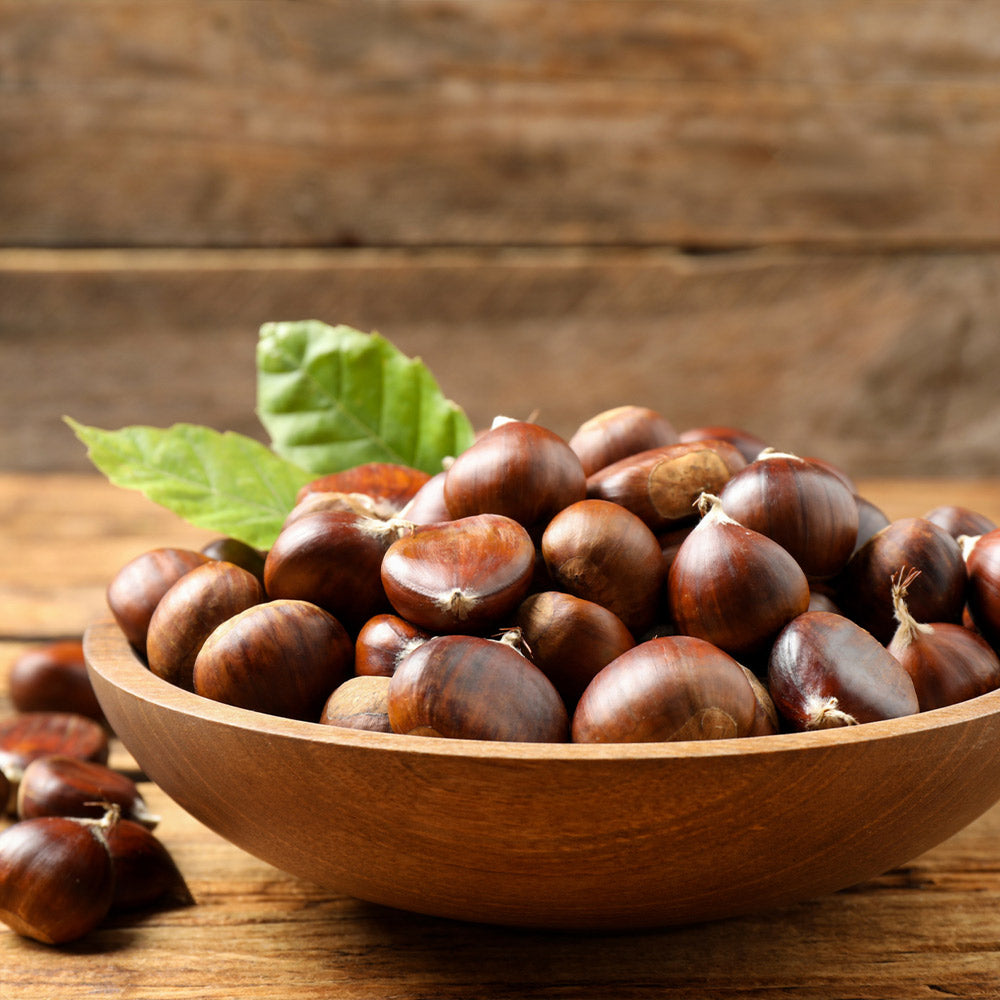
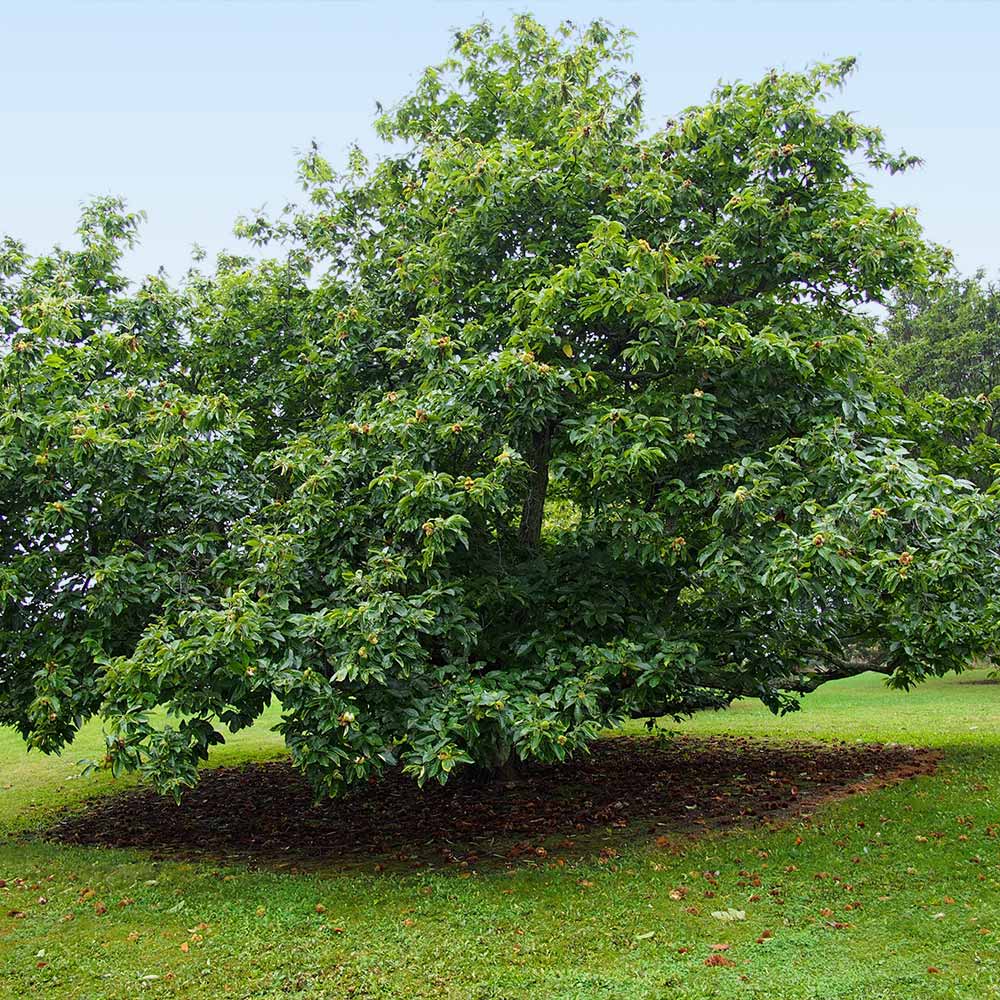
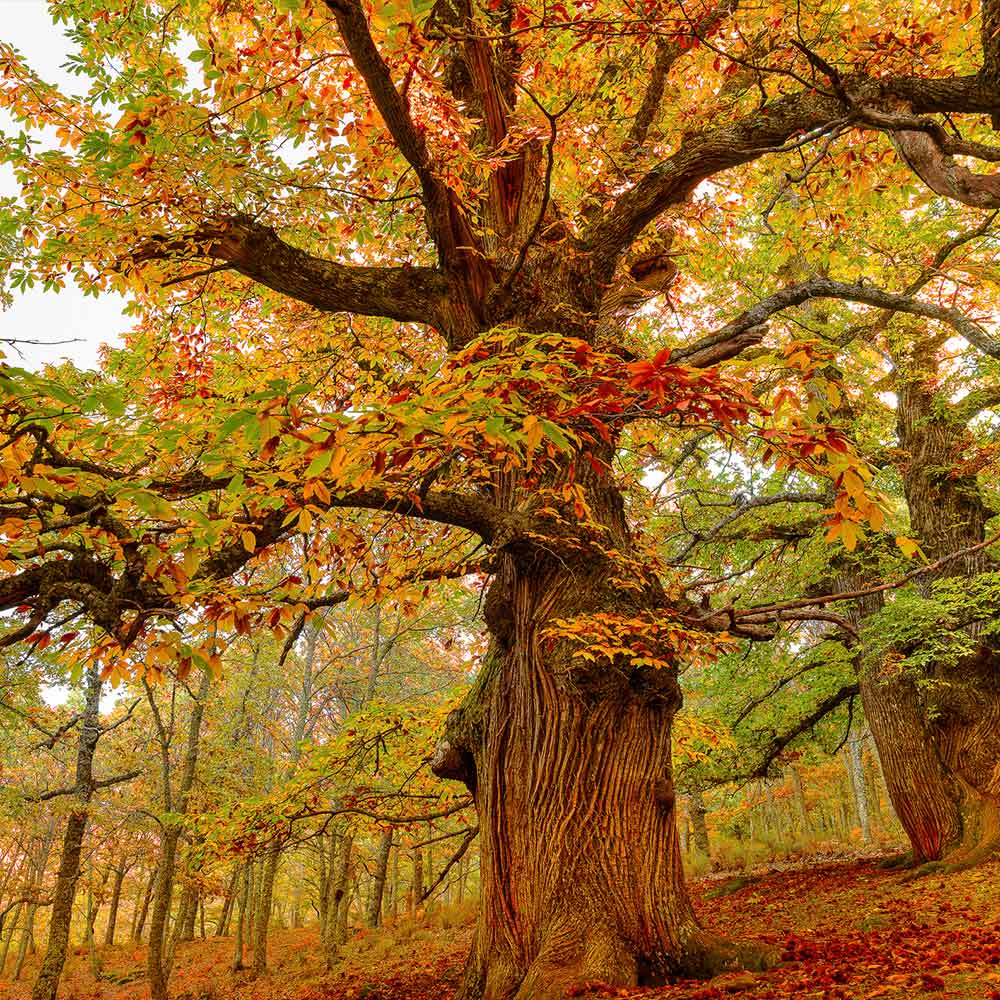

Comment